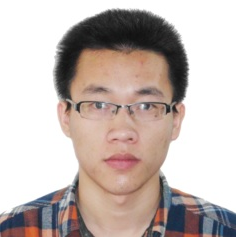Machine Learning Based Remote Sensing Image Classification
A special issue of Sensors (ISSN 1424-8220). This special issue belongs to the section "Sensing and Imaging".
Deadline for manuscript submissions: closed (31 December 2023) | Viewed by 14752
Special Issue Editors
Interests: Remote sensing image analysis and processing; Image fusion restoration and enhancement
Interests: image processing; pattern recognition; artificial intelligence
Interests: machine learning; hyperspectral image processing
Special Issues, Collections and Topics in MDPI journals
Interests: coastal remote sensing; hyperspectral image processing with machine learning
Special Issues, Collections and Topics in MDPI journals
Special Issue Information
Dear Colleagues,
Today, it is easy to obtain remote sensing images from different types of sensors, such as hyperspectral, multispectral, LiDAR, etc. The classification of remote sensing images (RSIs) is one of the fastest growing research areas because of its wide range of applications. Remarkable efforts have been made in improving classification accuracy, subpixel-level classification and many other aspects during the past few decades. Particularly, in recent years, the development and achievements in machine learning have expanded the application scenarios as well as research methodology of RSI classification. As a result, machine learning-based RSI classification attracts more and more attention. Unlike traditional methods, the machine learning-based methods are capable of extracting and representing features directly from input data with much better performance. However, there are still some challenges and problems waiting for researching and discussion. This Special Issue will focus on recent advances in new methods, algorithms, and architectures of machine learning to handle the practical challenges and problems in the RSI classification. The main goal of this Special Issue is to address advanced topics of interest including, but are not limited to, the following:
- Machine learning based multisource RSI fusion and superresolution;
- Machine learning based RSI feature extraction and representation;
- Endmember extraction and unmixing;
- Feature extraction and band selection;
- Segmentation, subpixel classification and mapping;
- Machine learning algorithms and models;
- RSI classification applications.
Dr. Yifan Zhang
Prof. Dr. Tao Gao
Prof. Dr. Jiangtao Peng
Dr. Xiangchao Meng
Guest Editors
Manuscript Submission Information
Manuscripts should be submitted online at www.mdpi.com by registering and logging in to this website. Once you are registered, click here to go to the submission form. Manuscripts can be submitted until the deadline. All submissions that pass pre-check are peer-reviewed. Accepted papers will be published continuously in the journal (as soon as accepted) and will be listed together on the special issue website. Research articles, review articles as well as short communications are invited. For planned papers, a title and short abstract (about 100 words) can be sent to the Editorial Office for announcement on this website.
Submitted manuscripts should not have been published previously, nor be under consideration for publication elsewhere (except conference proceedings papers). All manuscripts are thoroughly refereed through a single-blind peer-review process. A guide for authors and other relevant information for submission of manuscripts is available on the Instructions for Authors page. Sensors is an international peer-reviewed open access semimonthly journal published by MDPI.
Please visit the Instructions for Authors page before submitting a manuscript. The Article Processing Charge (APC) for publication in this open access journal is 2600 CHF (Swiss Francs). Submitted papers should be well formatted and use good English. Authors may use MDPI's English editing service prior to publication or during author revisions.
Keywords
- machine learning
- deep learning
- classification
- remote sensing image









